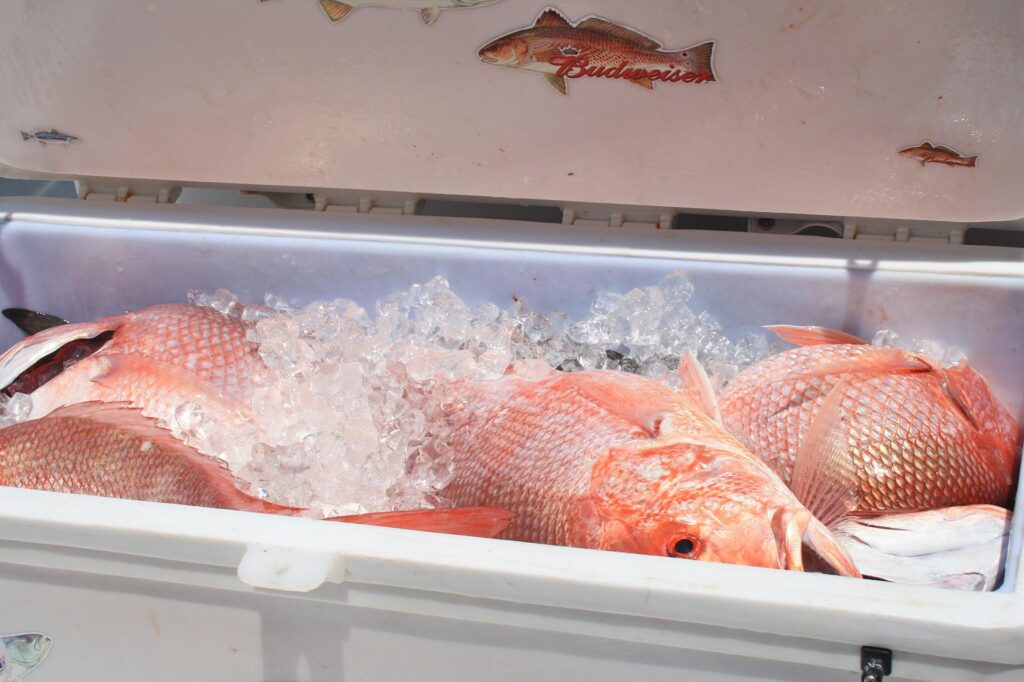I am here to show you what I think is the best way to keep fish fresh from ocean to table. As far back as I can remember my father would take me and my little brother fishing, keyword fishing, not catching! While we spent most of our time running around the beach or playing with the bait, my father did attempt to catch some fish, and I remember a few times when he was successful.
After catching some fish we would throw them in a bucket and promptly bring them back home to my mother. She was the only one of us who liked eating fish back then. We were a bit picky. My mother’s favorite way to prepare fish is to gut them, remove the scales, then grill or saute them whole with some butter and lemon. Although this is very simple and some prefer to prepare fish this way I’d like to show you another way I’ve discovered.
Earlier I mentioned that I was a picky eater, I have since developed a taste for fresh fish, but I have a very specific way I like to prepare my fish. Following this process will produce the firmest, flakiest, least fishy-tasting fish you could ever ask for.

What You’ll Need
- Cooler
- Cubed Ice
- Rock Salt (or Fresh Seawater)
- Filet Knife
- Cutting Board
- Fresh Water
- Vacuum Sealer
- Vacuum Bags
Prepare Before You Wet A Line
If you are heading out with the intention to catch and keep an edible fish you owe it to yourself and your tastebuds to prepare ahead of time. Start by finding a cooler that will fit the fish you plan to catch. I absolutely love my Yeti Coolers. They are durable and hold ice for as long as I’ll ever need. Check them out HERE.
Fill the cooler with ice to the tippy top and shut her up. Ice is cheap and sometimes free so it never hurts to have too much, and keeping the cooler lid closed as much as possible will keep your ice longer.
Just Landed A Big One, Now What?
You’ve just landed a speckled trout or maybe you just reeled up a flag yellowtail. These are some of the best eating fish that swim in the Atlantic ocean, so you’ll probably want to take them home for dinner.
Make some room in your cooler by bailing out some of the ice, replace that ice with fresh seawater (or rock salt and some freshwater), then stir it all up. Adding salt and some water to your ice lowers the freezing point of the water and can actually bring the temperature down to as low as 20 degrees Fahrenheit.

What does this do for your freshly caught table fare? Aside from being one of the most humane ways to dispatch a fish the extreme cold preserves the quality of the meat. As fish are placed into the ice-salt mixture the blood in their muscles retreats into their organs leaving you with extra clean filets.
I’ve actually filleted some fish that were already partially frozen after being placed in a cooler for a couple of hours while using this method.
Back At The Filet Table
This is where you’ll break out your filet knife and cutting board. I’ve been using a Bubba filet knife recently and I’m very happy with it. It’s got substantial grippage (if that’s a word) and seems to be holding up to all the abuse I put my gear through. Check them out HERE.
If you don’t already know how to filet a fish feel free to click over to this video. Watching videos on Youtube, then learning more through trial and error, is exactly how I learned to properly filet a fish.
I like to have a hose nearby to wash any fish slime or blood off of the meat before storing or cooking it. Our outside cat loves to hang around during this process and steal some scraps as I clean the fish. Necessary disclaimer time, according to some online resources raw fish can make pets sick so I do not recommend feeding it to your pets.
Time To Eat (Or Store) Your Fresh Catch
After fileting and gently washing your filets you can either season them up for the grill/fryer or store them away for later. In my opinion, the best way to keep fish fresh enough to enjoy later is by vacuum sealing and freezing them.
I’ve been using FoodSaver vacuum sealers for a long time and really don’t have any complaints, especially considering the affordable price points they offer. We currently have one tabletop FoodSaver unit that works well once you are back at home. Check it out HERE. We also enjoy traveling to fish and bring along a handheld vacuum sealer and zip-up bags to make preserving our catch even easier. It also serves as a very affordable entry-level option. Check it out HERE.
Once sealed I’ll mark the type of fish, where they were caught, and when we caught them on the bag then toss them in the freezer.
I’ve recently learned that many modern freezers have auto-defrosting features. This thaws everything out and then refreezes periodically to avoid frost build-up. This can affect the quality of your freshly caught filets and should be avoided if possible. We have an older chest freezer in the garage I use, instead of our freezer in the kitchen, for this very reason.
Is This The Best Way To Keep Fish Fresh?
I hope you have some good luck on your next fishing trip and get to try out what I think is the best way to keep fish fresh! If you have any tips, tricks, or ideas on other ways to store fish or even a great recipe you’d like to share with us, feel free to leave a comment below.

